BUSI49150 Business Analytics and Intelligence Sample
1.0 Introduction
Wirkkala is a juice bar located in Derby and south west London that offers customers a variety of fresh and delicious juices and smoothies. Their bottle drinks are produced with the highest quality ingredients and are made with natural, organic fruits and vegetables. All of their drinks are 100% organic and free from preservatives, artificial colors and flavors. They are also gluten and dairy free. Their bottle drinks come in an array of different flavors, including tropical fruits, citrus fruits, berries and green vegetables. Each drink is unique and packed with the perfect blend of vitamins and minerals to give their body the boost it needs. The bottles are also recyclable and biodegradable, making them environmentally friendly. At Wirkkala, their mission is to provide healthy and delicious juice and smoothies to their customers. They want to inspire people to lead healthy and active lives by providing them with nutrition-packed drinks that are good for the body and the environment. Their juices and smoothies are made with natural, organic and ethically sourced ingredients that are free from preservatives and artificial flavors.
2.0 Background
2.1 Background to the case study
Wirkkala is an innovative beverage company that has recently decided to open two outdoor juice bars in Derby and South West London. The juice bar will be open “January through December 2020” and aims to promote the company’s beverages and assist in resolving pandemic-related disruptions to grocery store offerings (ADIGÜZEL et al. 2020). Wirkkala decided to run another limited-time mission for their customers once the pandemic restrictions were lifted in order to maximize their juice bar. The company should use appreciation-based splitting to compare customers across four assemblies in order to accomplish this. To obtain an idea of each customer segment, Wirkkala chose one customer from each of the two domains and one store for her direct research (Agyeman et al.). 2020). To summarize information for each customer area, businesses want to use a variety of numerical and factual methods, turntables, information perception techniques, and computerized dashboards. One must ensure that the departmental cycle is successful and productive if one values customer retention, particularly repeat business (Antoine et al. 2022). In order to segment its customers into the four groups, Wirkkala will need to first determine the relevant characteristics and attributes of the customer base.
This includes psychographic data like lifestyle and interests as well as segment data like age, orientation, region, and salary level. Additionally, businesses must investigate consumer behavior. The quantity spent, the types of items purchased, and the frequency of procurements (Benbya et al. 2020). Once the relevant data is collected and analyzed, Wirkkala can use this information to group customers into four segments based on their values and behaviors. Once the segmentation process is complete, Wirkkala can use the relevant mathematical and statistical techniques, pivot tables, data visualization techniques, and digital dashboards to summarize the data for each customer segment (Bigliardi et al. 2021). This will help the company to gain a better understanding of each customer segment, allowing them to create a more effective and targeted advertising campaign. This will ultimately help Wirkkala to build strong customer relationships and to promote their drinks more effectively.
2.2 Research question
- Which region is more interesting to buy products from this juice bar?
- What are the differences between the customer segment and sales of two regions?
- Which month has the highest sales?
2.3 Structure of data
The data collected from Wirkkala’s customers will be structured in a way that allows for effective segmentation. First, the data will be organized by region (Derby and South West London), and then by demographic characteristics such as age, gender, and income level. This will provide Wirkkala with a better understanding of its customer base and will help them identify customer segments (Chakir et al. 2020). Additionally, the data will be structured by customer purchase behavior, including purchase frequency, purchase amount, and types of products purchased. This will help Wirkkala to better understand their customers’ buying behavior and preferences, as well as identify any potential opportunities. Finally, the data will be structured by customer loyalty level (Chen et al. 2021). This will help Wirkkala to better understand which customers are loyal to the brand and which customers may be more likely to switch to other brands in the future. This will also allow Wirkkala to better target their marketing campaigns to ensure that loyal customers are rewarded for their loyalty. The data will then be summarized using relevant mathematical and statistical techniques, including measures of dispersion and central tendency (El-Amin, 2022). This will help to provide an overall picture of the customer base and the different customer segments. Additionally, pivot tables and data visualization techniques, including charts, will be used to further examine the data and identify customer segments. Once the customer segments are identified, a digital dashboard will be used to track customer behavior and engagement, as well as analyze customer feedback (Enguita-Fernàndez et al. 2021). This will enable Wirkkala to track and monitor the performance of its juice bars and identify potential areas for improvement. With its wide selection of juices and smoothies, as well as its convenient locations in Derby and South West London, Wirkkala is sure to be a hit for anyone looking for a delicious and healthy beverage (McLaren et al. 2022). Whether they looking for a quick pick-me-up or a long-lasting energy boost, Wirkkala has something for everyone. The customer segmentation analysis conducted by Wirkkala has provided a comprehensive description of each customer segment, as well as an understanding of the characteristics of each segment.
2.4 Transforming data
There is a different section that is chosen from the customer dataset, orders dataset, as well as Inventory dataset. It is categorized with the data name, data types, number of values, number of black values as well as the percentage of completeness (Özbek et al. 2021). There is a total of 283 customer dataset, 1226 order datasets as well as 25 inventory data sets. The customer account number is an interval type of sat because this includes the number in the dataset. The title, first name, last name, gender, postal area, and region are the nominal data type because they include non-numerical data (Postolea et al. 2021). The age data is converted from the difference between the current years to the birth years. The column within the customer order sheet. The additional transformation that was carried out from the customer to group through the age, there is a total 10 years interval among the number of inventory as well as the price with the data that was combined with the discount as well as the general total value (Rostini et al. 2021). This is applied with the cost of the data sheet borders to prepare the column of the total paid.
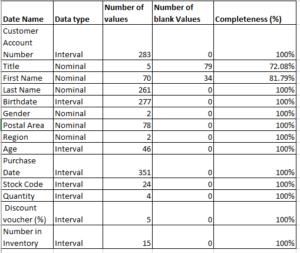
Figure 1: Data fields, quality, and types
(Source: Self-Created in MS-Excel)
The above figure shows the data field, quality, and types with the data name. There are a number of values excluding the repeated value as well as the blank value where the value is absent as well as the assumed zero.
3.0 Data analysis and results
3.1 Customer segmentation
This includes the demographic with the gender as well as the region. The following graph shows the customer segmentation based on gender as well as the region. There are a total of 283 data sets where the female, as well as male gender, are divided according to the region. The resignation includes London as well as the midlands. The age group are based on the years.
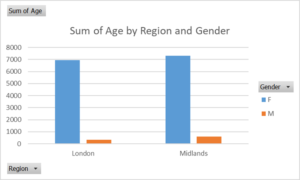
Figure 2: Demographics of Customer by age, region and gander
(Source: Self-Created in MS-Excel)
In the provided figure discuss the demographics of the customers that depend on age, region and gender. This is created in MS-Excel. This graphical representation shows how many customers are female and how many customers are male in London as well as Midlands.
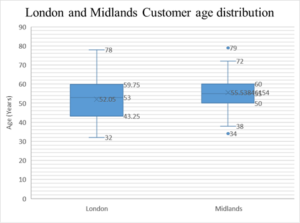
Figure 3: South West London and Midlands customers’ age distribution
(Source: Self-Created in MS-Excel)
The above figure shows the south west London and midlands customers’ distribution based on age. Gender depends on the region of London as well as the midlands. Where the two outlets are presented the upper outlet shows the higher age group, as well as the lower outlet, represents the lower age group.
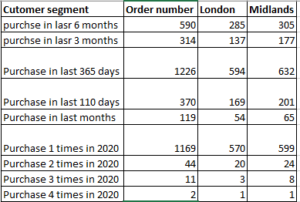
Figure 4: Description and Criteria of Customer Segmentation
(Source: Self-Created in MS-Excel)
The above figure shows the description as well as the criteria of customer segmentation. Where the customers are divided according to purchase into the last 6 months, 3 months, 365 days, 110 days, last months, 1 time, 2 times, 3 times, as well as the 4 times in 2020. The order number also includes the Landon as well as the midland customer criteria.
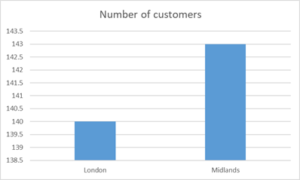
Figure 5: Number of customers in London and Midlands
(Source: Self-Created in MS-Excel)
The above figure shows the number of customers within the midlands as well as London. There is analyzing the number of customers in these two regions. The above figure shows that the midlands customer has more demand regarding the product compared to the London region.
3.2 Regional analysis
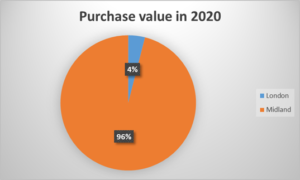
Figure 6: Sales of 2020 by region
(Source: Self-Created in MS-Excel)
In the above figure the purchase value of the year based on the reason is shown. This figure indicates that most orders received are from Midland.
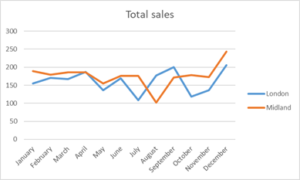
Figure 7: Monthly Sales of 2020 by region
(Source: Self-Created in MS-Excel)
The above figure shows the monthly sales of the year 2020 with the region of Landon as well as the midlands. This represents that London has fewer sales rather than the midland region.
3.3 Discussion
After analyzing the customer data of the juice bar it is found that more are female customers engaged with the business of the company. Morte purchase order received from the midland region. The customer sells most of its products to the midland region.
4.0 Conclusions
In this research paper the strategy of the business is discussed here. The analysis of the business strategy of Wirkkala is a great place to grab a quick and healthy snack or drink. The data collected from the sample of customers and sales provided valuable insights into the customer segments. Using the relevant mathematical and statistical techniques, pivot tables, data visualization techniques, and digital dashboards, the segmentation analysis was able to provide an in-depth understanding of each customer segment. The results of the analysis, however, must be interpreted with caution. The sample of customers and sales may not be representative of the entire population, and therefore the results may not reflect the true characteristics of the customer base. To ensure that Wirkkala makes the most informed decision regarding the new product campaign, it is important to consider any external factors that may be influential.
Overall, the customer segmentation analysis conducted by Wirkkala has provided valuable insights into the customer segments, which will help inform the decision-making process regarding the new product campaign. In order to ensure that Wirkkala makes the most informed decision, it is also important to consider any external factors that may be influential. In conclusion, the customer segmentation analysis conducted by Wirkkala has provided a comprehensive description of the customer segments and will help the company make the most informed decision regarding the new product campaign.
5.0 Recommendations
Based on the data collected from the two juice bar locations and sales figures from the customers, Wirkkala can segment their customers into four groups using value-based segmentation. This segmentation can be done with the help of relevant mathematical and statistical techniques, pivot tables, data visualization techniques (including charts), and digital dashboards. The first step in analyzing the data is to calculate measures of central tendencies, such as mean, median, and mode. This will help to determine the average values of the sales figures so that the customer segments can be created. The next step is to use the pivot tables to calculate the standard deviation of the sales figures. This will show how much the sales figures deviate from the mean, which can be used to create the customer segments. Finally, data visualization techniques and digital dashboards can be used to visualize the data and provide a clearer picture of the customer segments. While segmenting customers into four groups, one should also consider external factors that may influence the sales of the company. These external factors can include the current economic situation, demographics, customer preferences, and other socio-economic factors. It is important to consider these factors in order to determine the best customer segment to target with the new product campaign.
To ensure that the sample of customers and sales reflects the population, it is important to use stratified sampling. This is a method of sampling that ensures that the sample is representative of the population. Stratified sampling should be used to ensure that each customer segment is represented in the sample. In the summary of recommendations part, Wirkkala can use value-based segmentation to create customer segments to target with their new product campaign. This can be done with the help of relevant mathematical and statistical techniques, pivot tables, data visualization techniques, and digital dashboards. In addition, external factors such as the current economic situation, demographics, customer preferences, and other socioeconomic factors need to be taken into consideration when creating customer segments. Furthermore, stratified sampling should be used to ensure that the sample of customers and sales reflects the population.
Reference List
Journals
ADIGÜZEL, Z. and Küçükoğlu, İ., 2020. Examining of loneliness and organizational effectiveness based on work density and organizational communication in organizations. Balıkesir Üniversitesi Sosyal Bilimler Enstitüsü Dergisi, 23(43), pp.159-179.
Agyeman, Y.N., Newton, S.K., Annor, R.B. and Owusu-Dabo, E., 2020. The effectiveness of the revised intermittent preventive treatment with Sulphadoxine Pyrimethamine (IPTp-SP) in the prevention of malaria among pregnant women in northern Ghana. Journal of Tropical Medicine, 2020.
Antoine, A., Fitchett, G., Marin, D., Sharma, V., Garman, A., Haythorn, T., White, K., Greene, A. and Cadge, W., 2022. What organizational and business models underlie the provision of spiritual care in healthcare organizations? An initial description and analysis. Journal of health care chaplaincy, 28(2), pp.272-284.
Benbya, H., Davenport, T.H. and Pachidi, S., 2020. Artificial intelligence in organizations: Current state and future opportunities. MIS Quarterly Executive, 19(4).
Bigliardi, B. and Filippelli, S., 2021. Investigating circular business model innovation through keywords analysis. Sustainability, 13(9), p.5036.
Chakir, A., Chergui, M. and Andry, J.F., 2020. A smart updater it governance platform based on artificial intelligence. risk, 8, p.9.
Chen, R., Liu, Y. and Zhou, F., 2021. Turning danger into safety: The origin, research context and theoretical framework of organizational resilience. IEEE Access, 9, pp.48899-48913.
El-Amin, A., 2022. Organizational climate change: diversity, equity, inclusion, and belonging. In Implementing Diversity, Equity, Inclusion, and Belonging Management in Organizational Change Initiatives (pp. 1-23). IGI Global.
Enguita-Fernàndez, C., Alonso, Y., Lusengi, W., Mayembe, A., Manun’Ebo, M.F., Ranaivontiavina, S., Rasoamananjaranahary, A.M., Mucavele, E., Macete, E., Nwankwo, O. and Meremikwu, M., 2021. Trust, community health workers and delivery of intermittent preventive treatment of malaria in pregnancy: a comparative qualitative analysis of four sub-Saharan countries. Global Public Health, 16(12), pp.1889-1903.
McLaren, J. and Appleyard, T., 2022. Social movements, identity and disruption in organizational fields: Accounting for farm animal welfare. Critical Perspectives on Accounting, 84, p.102310.
Özbek, K.G.K., Özcan, S. and Çalışkan, F.A., 2021. Customer complaints encountered in the online food retail during the COVID-19 intermittent curfew period. Turkish Journal of Marketing, 6(3), pp.223-238.
Postolea, I.D. and Bodea, C.N., 2021. Resilience and Economic Intelligence Build Through Digitalization—An it Perspective. Issues Inf. Syst, 22, pp.335-347.
Rostini, R., Souisa, W., Masmarulan, R. and Yasin, N., 2021. Competitiveness development, learning orientation, entrepreneurial commitment and business performance in the silk industry. Management Science Letters, 11(3), pp.903-908.
Schwingshackl, L., Zähringer, J., Nitschke, K., Torbahn, G., Lohner, S., Kühn, T., Fontana, L., Veronese, N., Schmucker, C. and Meerpohl, J.J., 2021. Impact of intermittent energy restriction on anthropometric outcomes and intermediate disease markers in patients with overweight and obesity: systematic review and meta-analyses. Critical reviews in food science and nutrition, 61(8), pp.1293-1304.
Setiyani, L. and Rostiani, Y., 2021. Analysis of E-commerce adoption by SMEs using the technology-organization-environment (TOE) model: A case study in karawang, Indonesia. International Journal of Science, Technology & Management, 2(4), pp.1113-1132.
Sonmez Cakir, F. and Adiguzel, Z., 2020. Analysis of leader effectiveness in organization and knowledge sharing behavior on employees and organization. Sage Open, 10(1), p.2158244020914634.
Torres, L.L., 2022. School organizational culture and leadership: theoretical trends and new analytical proposals. Education Sciences, 12(4), p.254.
Ujwary-Gil, A., 2020. Organizational network analysis: Auditing intangible resources (p. 288).
Know more about UniqueSubmission’s other writing services:


I was recommended this website by my cousin I am not sure whether this post is written by him as nobody else know such detailed about my difficulty You are wonderful Thanks